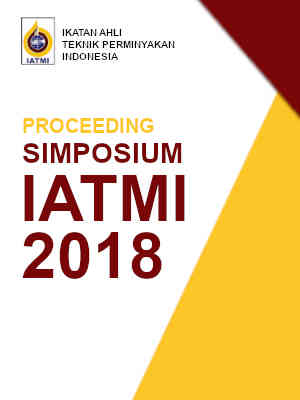PAPER`S TITLE
Kata Kunci:
sand retention test, shally sand, sand control, clay stabilizer, gravel pack, zeta potential altering systemAbstrak
This paper discuss the application of sand retention test to examine the performances of sand control methods for an oil field that being produced under waterflood. The parameters observed in this test are the amount of solid produced / deposited, the rate of production, and the permeability of the filtration media. Tests were carried out on shally-sand samples from three different zones: Z40, Z56, and Z60. The sample are in fine to very-fine grain size category and has an average clay mineral content of +27%. The tested sand control method is using filtration media which simulate the use of gravelpack frackpack. This study also investigate the effects of Zeta Potential Altering System (ZPAS) and clay stabilizer on sand production and permeabilities.
Test result on the use of chemical consolidation, ZPAS on zones Z56 and Z60 exhibit low sand production, ranged from 0.0002 0.0009 gr/ cc and 0.00008 0.0002 gr/ cc, with permeability values ranging from 39.5 129.67 mD and 65.97 113.95 mD respectively. Whereas, on samples from zone Z40, the amount of solid produced is 0.00027 -0.0018 gr/cc and the permeability value is 19.87 119.25 mD. Other tests, using gravelpack as sand control show similar results and relatively mor consistent solid production ranged: 0.00012 -0.00014 gr/ cc in zone Z40, 0.00005- 0.0001 gr/ce in zone Z56, and 0.0001 -0.0002 gr/ce in zone Z60. However, the permeability value tend to be lower: 14.08 -75.27 mD in zone 40, 46.07 - 102.91 mD in zone 56, and 6.23-37.08 mD in zone 60.
Measurement of the effect of clay stabilizer was performed by using KCl solution as the injection fluid and using gravel pack as the filtration media. Tests show significant better results, where there is an increase in the value of permeability and the amount of solid produced is relatively stable. Permeability values increased to 463.89-623.35 mD in zones 40, 1813.38-6649.05 mD in zones 56, and 287.01 438.40 mD in zone 60. The results of this test proved that the characteristics of reservoir rock, reservoir fluid and the injection fluid play important role in a succesful sand control.



